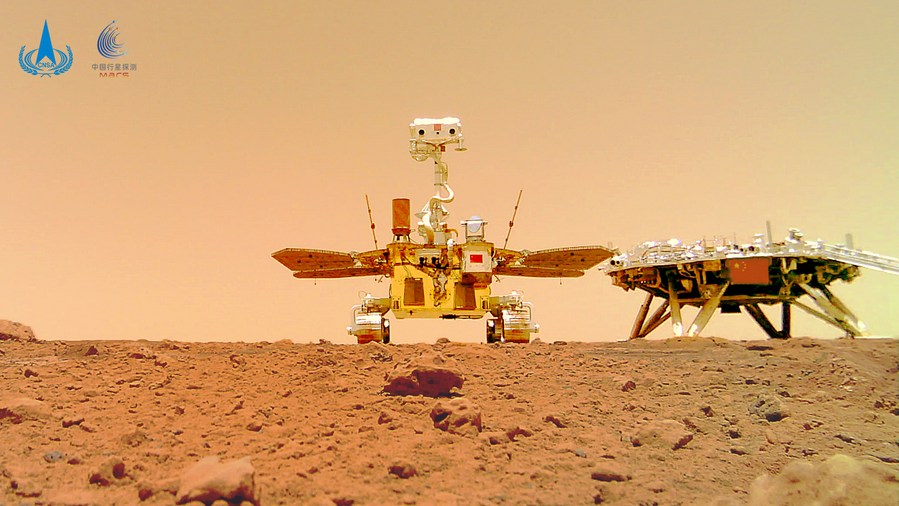
Photo released on June 11, 2021 by the China National Space Administration (CNSA) shows a selfie of China's first Mars rover Zhurong with the landing platform. (CNSA/Handout via Xinhua)
BEIJING, Nov. 25 (Xinhua) -- Radars mounted on China's Mars rover Zhurong detected 16 irregular wedges buried underneath a vast plain in the northern hemisphere of Mars.
A collaborative team led by the researchers from the Institute of Geology and Geophysics under the Chinese Academy of Sciences identified from the radar data the polygonal wedges below a depth of 35 meters within the rover's journey of approximately 1.2 kilometers, according to the study published on Thursday in the journal Nature Astronomy.
The study showed that the findings suggested a wide distribution of such terrain beneath Utopia Planitia, the largest basin on Mars.
Researchers proposed that the polygons were potentially generated by freeze-thaw cycles.
For polygons with diameters from centimeters to tens of meters, possible formation mechanisms may include contraction from dried-up wet sediments producing mud-cracks, contraction from cooling lava producing columnar jointing, faulting creating a jointing system in rock and thermal contraction cracking, according to the study.
Also, the contrast above and below about-35-meter depth represented a notable transformation of water activity or thermal conditions in ancient Martian time, implying that there was a climatic upheaval at low-to-mid latitudes.
The study also showed that drastic climate changes took place possibly due to the high obliquity of ancient Mars.
The findings point to more evidence for understanding the complex geological evolution and climate change of the red planet.
China's Tianwen-1 mission, consisting of an orbiter, a lander and a rover, was launched on July 23, 2020.
The lander, carrying the rover with an expected life span of at least 90 Martian days or about three months on Earth, touched down in the southern part of Utopia Planitia on May 15, 2021.